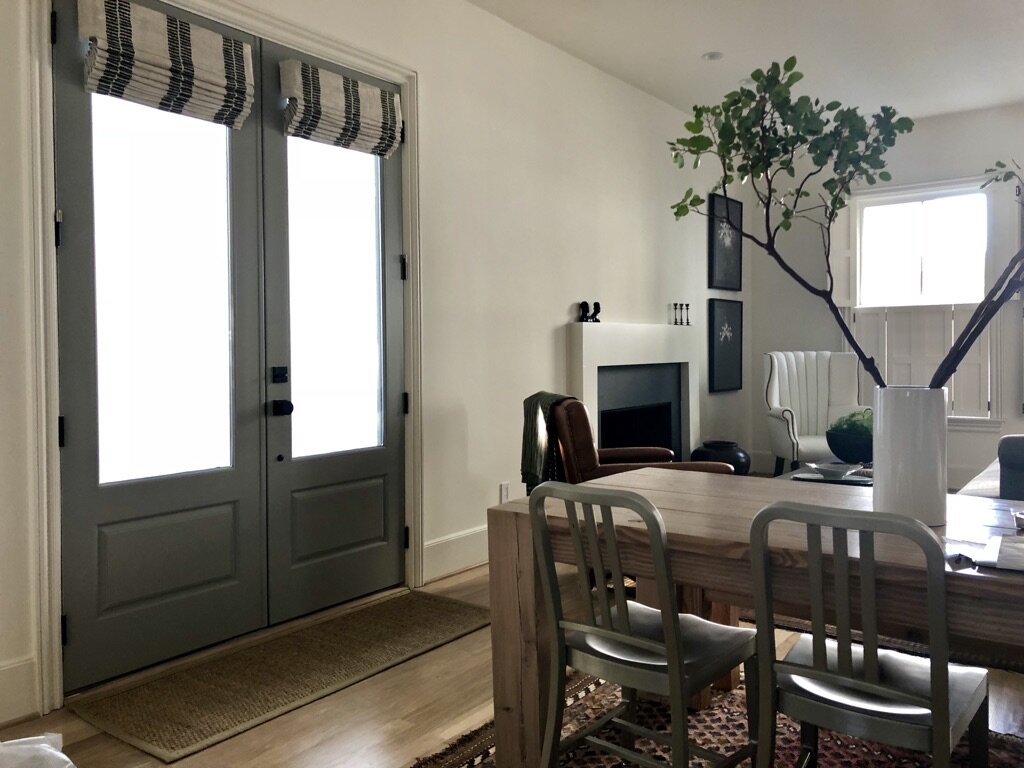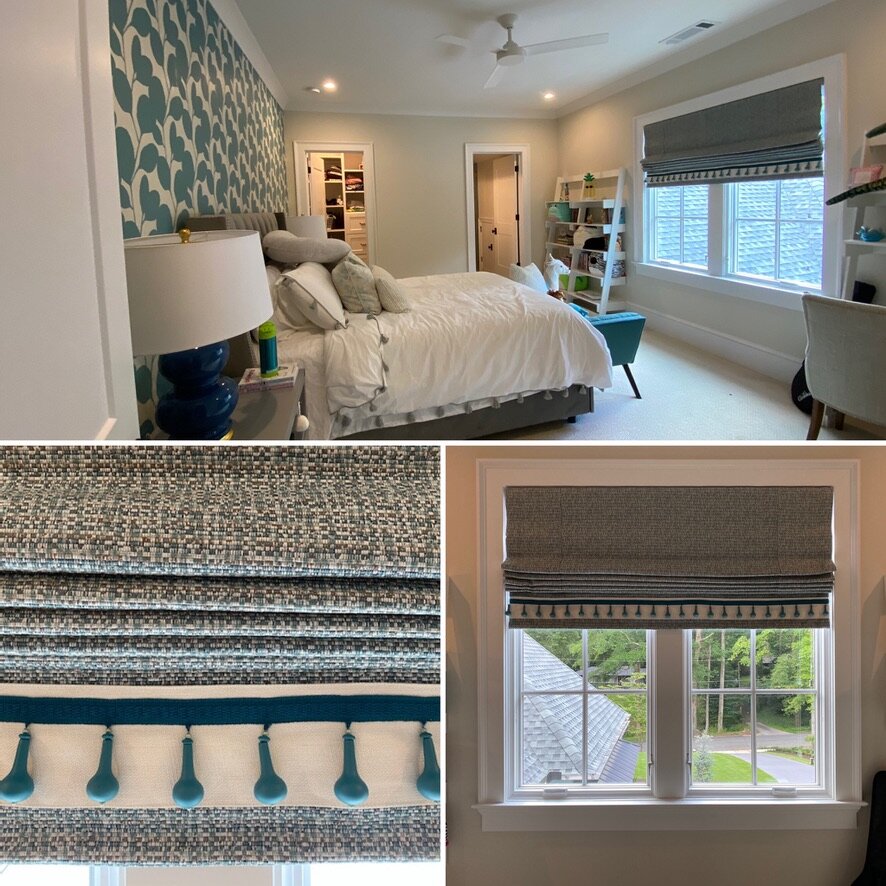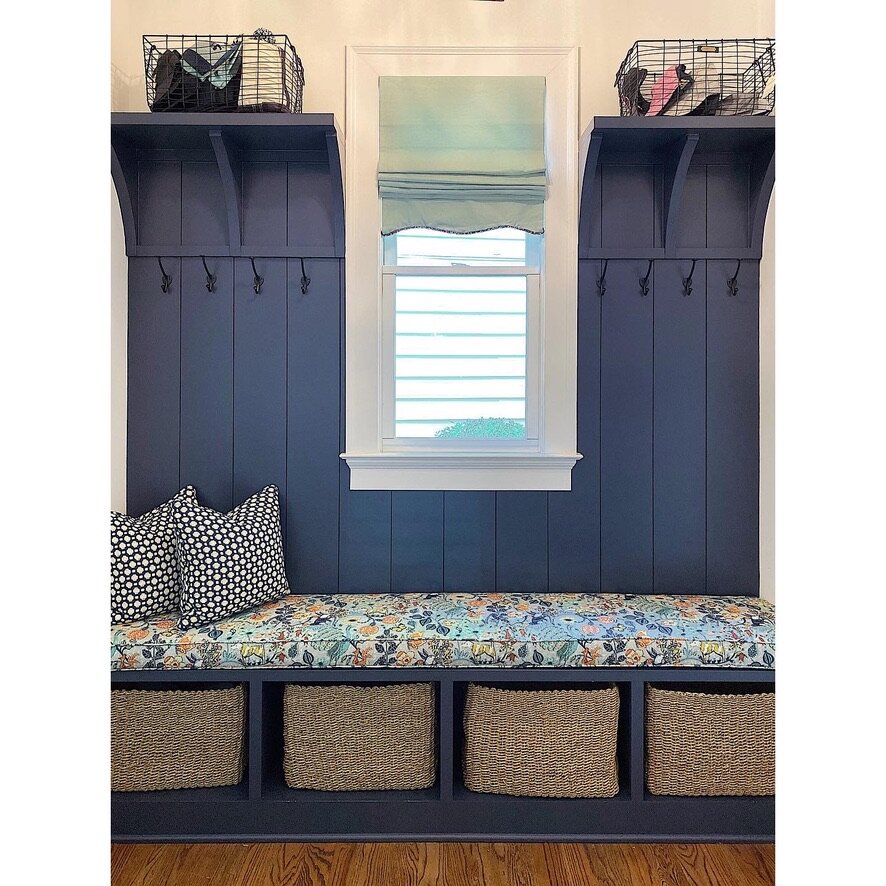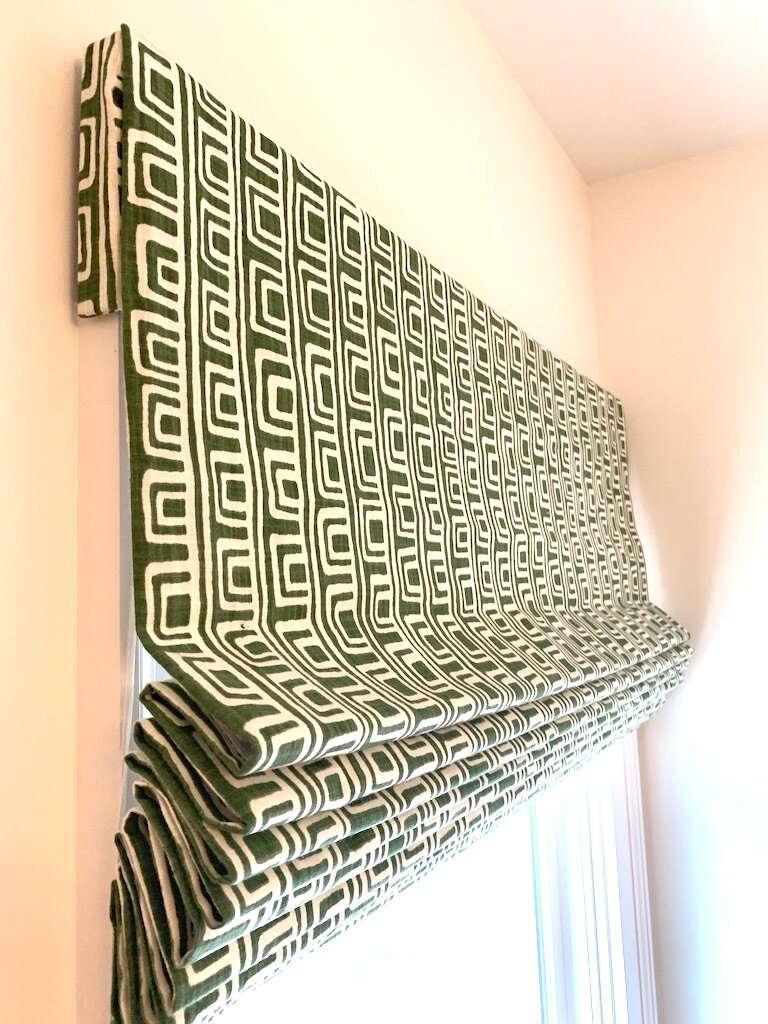What Are Roman Shades?
Roman Shades, also commonly referred to as Roman Blinds, use fabric to cover a window. These offer both light filtering and room darkening options. They offer a soft look that provides complete privacy, and they are easy to operate. Roman shades can be cord controlled or cordless, and often with no upcharge. Our cordless option is Certified Best for Kids so you can use them in your child’s room without worry.
This type of window dressing has long been regarded as a stylish and contemporary solution for defusing or blocking sunlight when needed. They hang straight down when closed, and form soft pleats when pulled up. This creates a lovely minimalist effect. At Jim Davis Designs, we’ll custom design your Roman Shade. You can choose your fabric from our mobile showroom or provide your own for a window treatment that is truly designed for you and your home, and will be made with care from quality materials. We also use premium linings that will be mildew and mold resistance if you have any condensation on your windows.
Unlike many of today's modern shades, blinds, or draperies, Roman Shades have a pretty amazing history. They have been a window solution for centuries, and this aesthetic is a timeless option for your home. They are also so versatile, and can be fitted in bedrooms, kitchens, bathrooms, most anywhere in your home really!

















You’re Still Reading. Want To Know Even More? Let’s get geeky.
How Roman Shades Work:
You can think of the shape of Roman Shades like an envelope made from a long flat piece of fabric. This fabric will include a lining, of which is attached around it's perimeter to create a kind of seal. This fabric will hang flat once installed into a window frame. If the shade is opened, the fabric gathers into an aesthetically pleasing horizontal pleats that will stack up on one another. There are some beautiful examples from some of our previous installs in the above carousel. We mostly use a flat fold roman shade for a clean look but we can also fabricate hobblefold romans, relaxed romans, and London pleat romans.
The pleats that gather are formed by something called a dowel - a slim plastic rod. These are inserted into what are called a channel, or tape. The rod is stitched into the shade horizontally between the face fabric and the liner. The cords are also stitched and equally spaced across the shade and threaded vertically downwards through the channels and secured. The shade is then attached to a header rail, which is the wooden or metal track at the top. The top of the cords are threaded through hooks or cord carriers in that header rail, and guided down the left or right side of the shade. This all works together like a pulley system.
How to Operate:
Now we're ready to operate the shade once it's all been assembled. When the cords are pulled (or cordless lift), the dowel at the bottom raises up inch by inch to the next dowel above it. This creates those beautiful and pleasing pleats. It can be opened all the way up until every dowel is stacked. You don't see the rods as they are between the face fabric and liner. The result is a neat and efficient construction that is so versatile in your options for design, fabric, textures, color, and style. There are literally thousands of options. If you're feeling overwhelmed, not to worry! We have a great eye and can make custom recommendations for the shade that matches your own unique style and home aesthetic.
If you’d like to explore more of our custom-made roman shades - please click through here!

